Object of Intrigue: Fearsome and Fabulous Renaissance Helmets

Sixteenth century Roman Empire ruler Charles V ponders his next armor purchase. (Image: Detail from a Titian painting/Public domain)
When Holy Roman Emperor Charles V wanted to look particularly bad-ass in battle, he called upon the services of a Milanese man named Filippo Negroli.
Negroli was the 16th century’s most skilled and celebrated armorer. With the help of his brothers and cousins at their Milanese family workshop, Negroli outfitted the bigwigs of the Holy Roman Empire and the French and Spanish royal courts in incredible style. His elaborately embellished gauntlets, breastplates, shields, and helmets incorporated mythological figures like griffins, mermaids, and Medusa, as well as designs based on the art of ancient Rome.
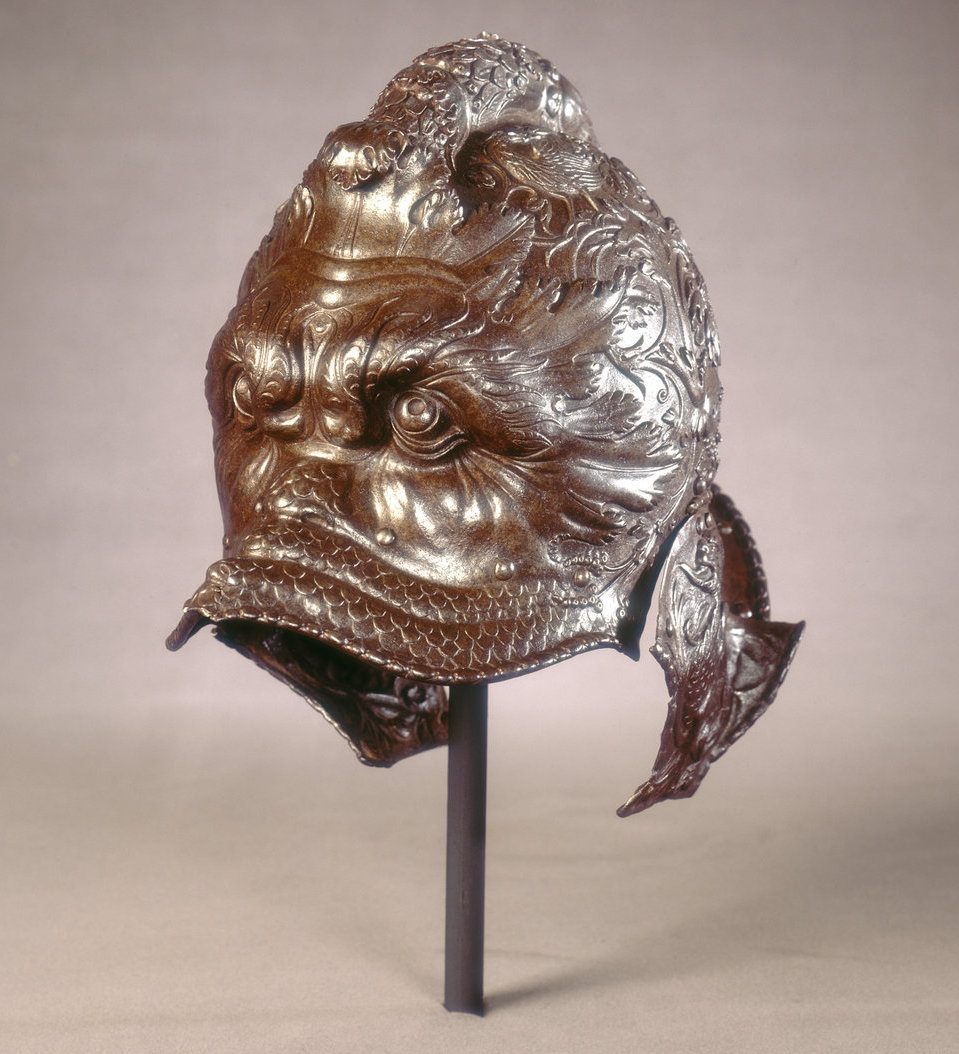
A Negroli helmet in the form of a dolphin mask, held at the National Gallery of Art. (Photo: National Gallery of Art/Public domain)
In addition to protecting internal organs from a forcefully aimed rapier or halberd, these pieces of armor, according to Heroic Armor of the Italian Renaissance, ”played a symbolic role, transforming their wearers into the guise of the heroes of ancient history, mythology, or literature.” The helmets were ”intended for Renaissance princes who were often educated in the classics.” These highly self-assured individuals “saw themselves as successors to the great statesmen and generals of ancient Rome.”
Among the most impressive creations Negroli’s armory sent forth were the burgonets: military helmets characterized by a prominent peak and a comb or crest that runs all the way from the forehead to the base of the neck. One incredible example, made in 1543, is this burgonet now held at the Metropolitan Museum in New York:
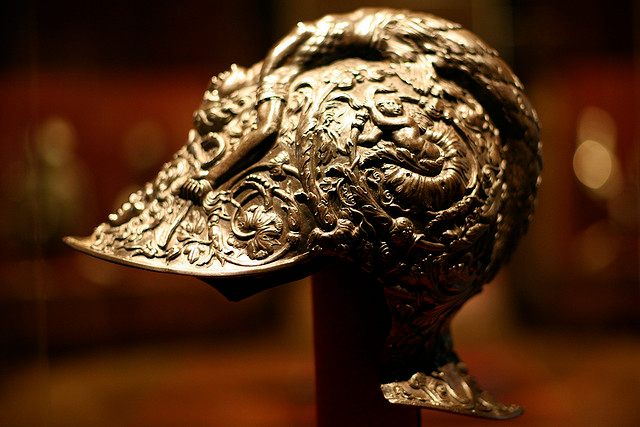
(Photo: Katie Chao/Creative Commons)
The museum’s description of the helmet notes that a ”graceful mermaid-like siren forming the helmet’s comb holds a grimacing head of Medusa by the hair.” Here is a closer look at that Medusa head, which sits at the brim of the burgonet:
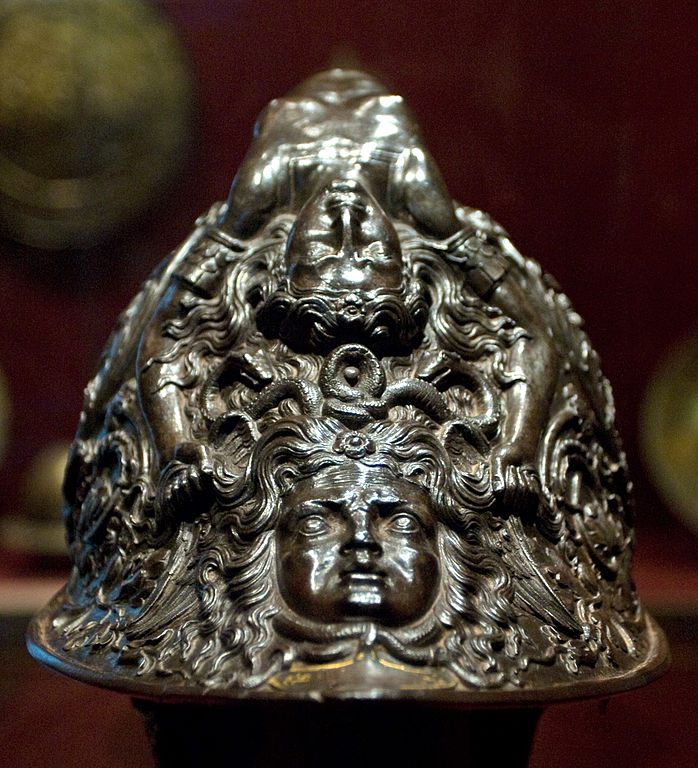
(Photo: Trevor Little/Creative Commons)
The artisans at the Negroli armory were fans of depicting figures reclining across the combs of helmets. The burgonet below, attributed to Filippo Negroli and currently in the collection of the Musée de l’Armée in Paris, features an anguished-looking fellow plucked from ancient Rome who lies with his hands bound behind his back. Winged miscreants on either side of him pull at his glorious beard.
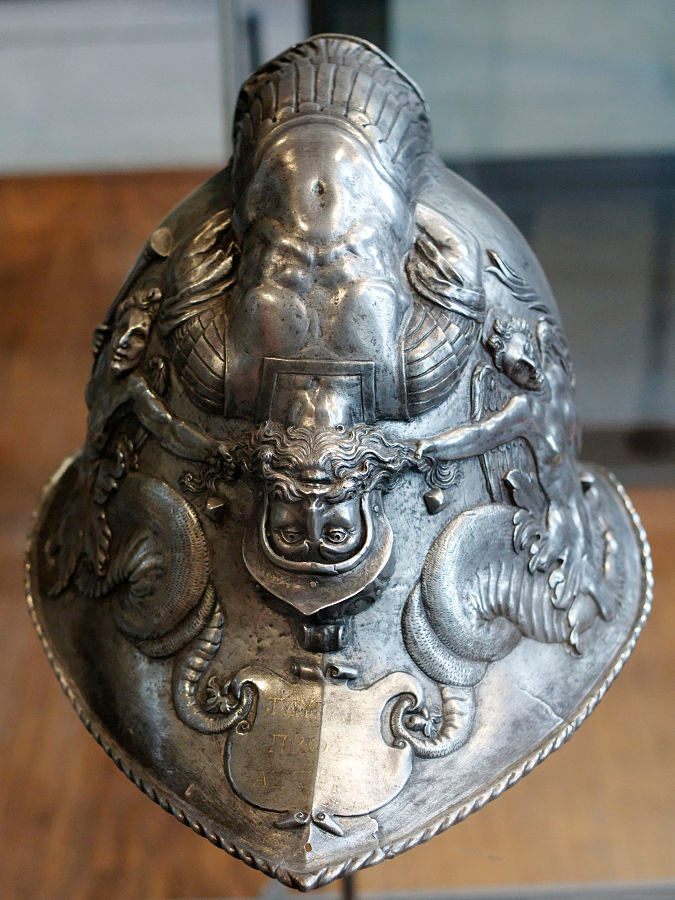
(Photo: Marie-Lan Nguyen/Creative Commons)
Another striking Negroli burgonet at the Musée de l’Armée is shaped like the head of a griffin:
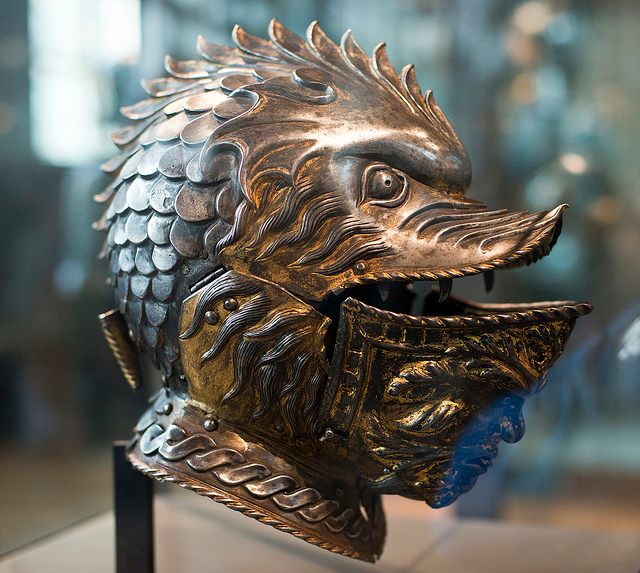
(Photo: Steve Collis/Creative Commons)
Burgonets like these, which are made of steel, weigh between four and five pounds—a bit of a burden on the noggin, but nothing compared to shouldering the demands of the Roman Empire.
Negroli’s satisfied customers included Holy Roman Emperor Charles V, and French rulers Francis I and Henry II. Charles V was a frequent client, and didn’t always go in for all the mythology stuff—in some cases, the man was the myth. Negroli made a parade helmet for the emperor that incorporated Charles V’s own golden hair and beard into the design, resulting in him putting on armor that made him look like a steel version of himself.


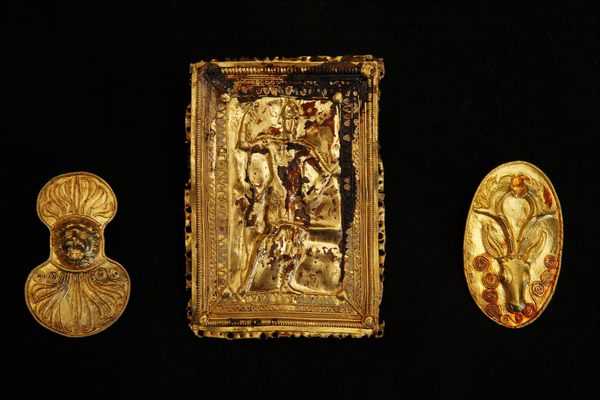












Follow us on Twitter to get the latest on the world's hidden wonders.
Like us on Facebook to get the latest on the world's hidden wonders.
Follow us on Twitter Like us on Facebook